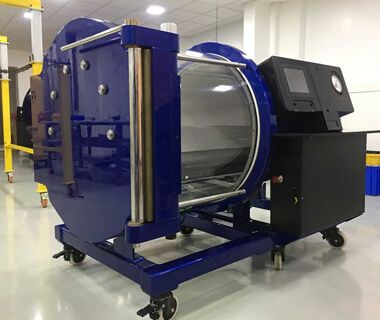Why hyperbaric oxygen can treat diseases

Oxygen is one of the three major substances that organismsdepend on for survival. Without one of oxygen, water and food, life stops. Among the three substances, there is only oxygen. The body is the least able to store it. People can live for 6 days without supplementing water. People can live for 6 weeks without food. But if a person’s life stops supplying oxygen, his life can only survive for 6 minutes. Therefore, for the continuation of life, oxygen is the most important of the three substances.
So what is hyperbaric oxygen therapy? Simply put, the process of inhaling high concentrations of oxygen to treat diseases in an environment above one atmosphere is called hyperbaric oxygen therapy. Generally, people need to perform hyperbaric oxygen therapy in the environment of a hyperbaric oxygen chamber.
What is the difference between hyperbaric oxygen and atmospheric oxygen? Under normal circumstances, we inhale oxygen into the lungs, and then the red blood cells in the blood transport the oxygen to all parts of the body. If a patient has 15 grams of hemoglobin per 100 milliliters of arterial blood, experiments have found that every 1 gram of hemoglobin can carry 1.34 milliliters of oxygen, and then every 100 milliliters of arterial blood can carry 20.1 milliliters of oxygen (15×1.34). When all hemoglobin carries oxygen, and then inhale more oxygen, the oxygen content in the blood will not change much. So, what if the patient is still hypoxic at this time? The problem of hypoxia can be solved by increasing the physical dissolved oxygen in the blood. How can we increase the dissolved oxygen in the blood? It is known that the solubility of gas in liquid increases with increasing pressure. Oxygen inhalation under high pressure (in a hyperbaric oxygen chamber) can significantly increase the dissolved oxygen content in the patient’s blood. Under certain pressure, if all the hemoglobin in the patient’s body is removed, only the dissolved oxygen in the blood can meet the metabolic needs of the patient’s body.
What is the effect of hyperbaric oxygen? The effect of hyperbaric oxygen is wide and unique, and there is no other way to replace it. Simply put, hyperbaric oxygen has the following effects:
1. Promote cell aerobic metabolism, correct cell hypoxia, and enable cells to carry out adequate aerobic metabolism.
2. Broad-spectrum antibacterial effect, not only against anaerobic bacteria, but also against aerobic bacteria.
3. It can shrink the arteries at the edema site, reduce local blood volume and reduce edema.
4. Promote the bactericidal effect of white blood cells. Sufficient oxygen supply, increased peroxide substances, and enhanced white blood cell sterilization.
5. Promote the antibacterial effect of certain antibiotics.
6. Increase the permeability of the blood-brain barrier. When there are lesions in the skull (such as infections, tumors), the simultaneous use of hyperbaric oxygen and drugs can increase the concentration of drugs in the skull and increase the efficacy.
7. Promote the discharge of harmful gases, such as coal gas and methylene chloride.
8. Regulate immune function. So far, studies have found that hyperbaric oxygen has a two-way regulatory effect on immune function-allergies can be suppressed, and low ones can be enhanced.
9. Health effect. As the age increases, some cells (such as brain cells) will experience hypoxia, ischemia, insufficient aerobic metabolism, and finally die. For example, before these cells die, adequate oxygen supply is given regularly, which can delay and reduce the speed and number of cell death.
Is hyperbaric oxygen harmful to normal people? As long as the treatment plan is selected properly, hyperbaric oxygen will not cause harm to people. In clinical work, doctors and family members often enter the cabin to accompany patients for treatment. Although some family members of patients do not take oxygen, under high pressure, some chronic diseases in the cabin are alleviated and even cured unknowingly.
